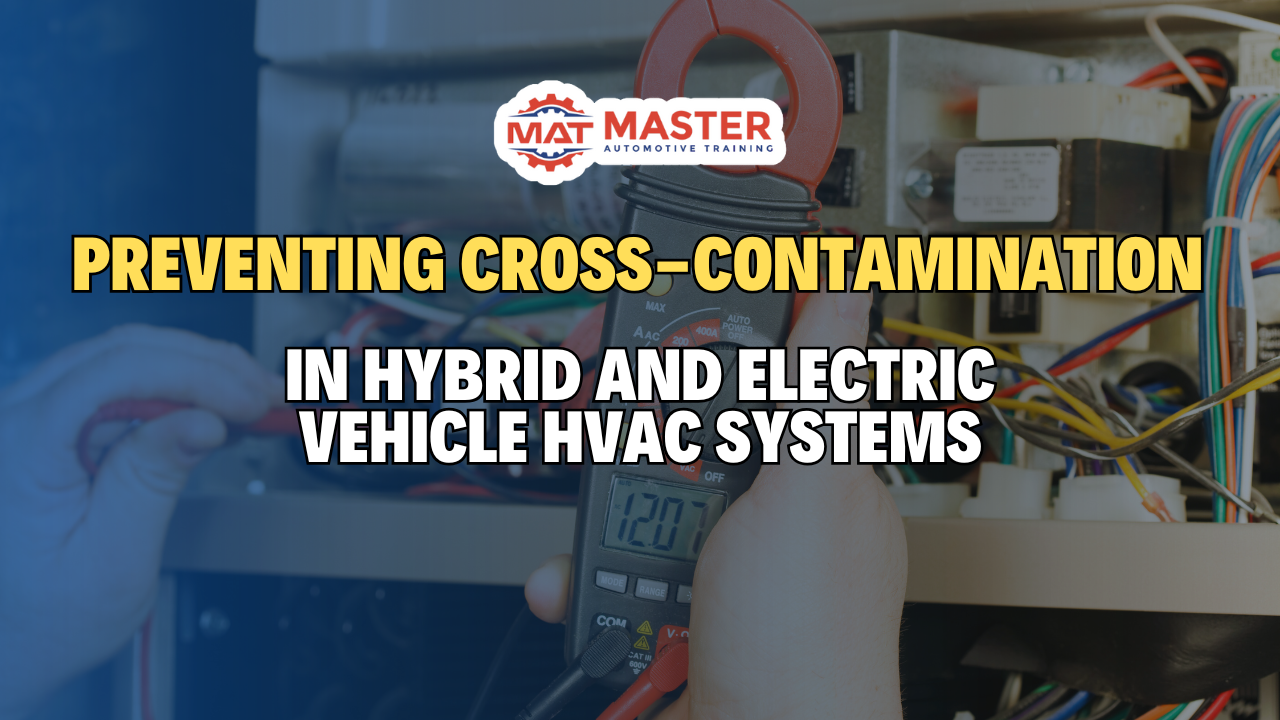 Introduction
Introduction
The rise of hybrid and electric vehicles (HEVs) has brought about new challenges and considerations for automotive service technicians. One critical aspect that requires special attention is the prevention of cross-contamination within the HVAC systems of these vehicles. This article will delve into the specific reasons why cross-contamination is a concern in HEVs and provide practical guidelines to mitigate risks.
Unique Characteristics of HEV HVAC Systems
- Refrigerant and Oil Compatibility: Hybrid and electric vehicles often employ different refrigerants and oils compared to traditional internal combustion engine (ICE) vehicles. These substances have distinct properties and compatibility requirements. Mixing them can lead to chemical reactions, system damage, and reduced performance.
- High-Voltage Components: HEVs incorporate high-voltage components in their electrical systems, including those related to the HVAC system. Accidental contact or contamination with these components can pose serious safety hazards.
Consequences of Cross-Contamination
- System Damage: Mixing incompatible refrigerants or oils can cause chemical reactions that damage the compressor, condenser, evaporator, and other components of the HVAC system.
- Reduced Efficiency: Cross-contamination can impair the system’s ability to cool or heat effectively, leading to discomfort for the vehicle occupants.
- Safety Risks: In some cases, cross-contamination can result in the release of harmful gases or create conditions that could lead to electrical short circuits or fires.
Guidelines for Preventing Cross-Contamination
- Proper Equipment Selection:
- Use equipment specifically designed for HEVs, ensuring compatibility with the unique refrigerants and oils used in these vehicles.
- Calibrate gauges and tools accurately to avoid measurement errors that could lead to incorrect refrigerant or oil additions.
- Isolation and Labeling:
- Isolate the HEV’s HVAC system from other vehicles to prevent accidental mixing of refrigerants or oils.
- Clearly label all hoses, fittings, and equipment to avoid confusion and ensure the correct components are used.
- Thorough Flushing:
- Before servicing the HVAC system, perform a thorough flush to remove any residual contaminants from the lines and components.
- Use a specialized flushing solution and follow the manufacturer’s recommended procedures.
- Refrigerant and Oil Recovery:
- Recover the refrigerant and oil from the HEV’s HVAC system using approved equipment.
- Ensure that the recovered substances are stored in labeled containers and disposed of properly according to local regulations.
- Visual Inspection:
- Inspect the HVAC system for any signs of damage, leaks, or contamination before and after service. Pay particular attention to high-voltage components and electrical connections.
- Training and Certification:
- Ensure that technicians are adequately trained in the specific requirements for servicing HEV HVAC systems.
- Encourage technicians to obtain relevant certifications to demonstrate their expertise and commitment to safety.
Conclusion
Preventing cross-contamination in HEV HVAC systems is essential for maintaining system performance, safety, and longevity. By following the guidelines outlined in this article, automotive service technicians can effectively mitigate risks and ensure that HEVs provide a comfortable and reliable driving experience for their owners.
